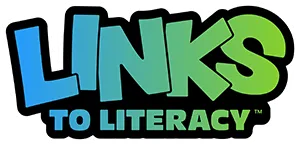How To Teach R-Controlled Vowels
R-controlled vowels are common in the English language. Therefore, it’s important for young readers to understand how to identify and use them. Effective teaching techniques include starting with basic phonetic patterns, demonstrating how "r" alters vowel sounds, and using various methods such as auditory practice, visual aids, and multisensory activities.
R-controlled vowels—also known as “bossy R-words”—are a unique group of vowel sounds that occur when a vowel is followed by the letter "r." For example, take the word “car.” In this word, the vowel "a" is influenced by the "r" that follows.
The sounds produced by bossy R-words are different from the usual long or short vowel sounds, so coming across them can often trip up young learners when they’re decoding. This is why teaching r-controlled vowels is crucial for developing strong reading and spelling skills. When learners understand how to decipher and pronounce these words, they can read more fluently, comprehend text better, and improve their overall literacy skills.
The Three Sounds of R-Controlled Vowels
It’s helpful to know the three main phonemes associated with r-controlled vowels. They are:
- /ar/: This sound is commonly found in words like "car," "star," and "hard."
- /er/: This sound is present in words like "her," "bird," and "burn."
- /or/: This sound is often heard in words like "short," "door," and "horse."
The sounds /ir/ and /ur/ are sometimes taught separately. However, because of their similarity in pronunciation, they are often taught as part of the /er/ group.
Focusing on the broader /er/ sound family may be more beneficial for young learners because it allows them to build a solid foundational knowledge of r-controlled vowels before delving into the nuances between /er/, /ir/, and /ur/.
Note: There may be differences in pronunciation due to dialect and regional differences, however, this article will use the standard dictionary pronunciations.
Techniques for Teaching R-Controlled Vowels
When teaching r-controlled vowels it’s best to break lessons into smaller sections, making the learning process more manageable. Plus, a gradual progression of instruction—from foundational and straightforward lessons to more complex ones—will help students build students’ knowledge and confidence.
- Begin With the Basics: Start by explicitly teaching the phonetics of r-controlled vowels. The /ar/ sound is the most common r-controlled vowel so it’s a great beginning.
- Emphasize Sound Changes: Use the substitution strategy to highlight the impact of the "r" on vowel sounds. For example, have students compare "cat" and "cart" to hear how the "r" changes the "a" sound. Repeat this process with other words to reinforce the concept.
- Teach Identification: Guide students through identifying whether a word contains an r-controlled vowel or not. Here is an easy step-by-step process:
- Locate the "r:" Find the "r" in the word.
- Check the syllable placement: Ensure the "r" is directly after the vowel or at the end of the syllable.
- Listen for the modified sound: Notice how the vowel’s sound changes from its isolated pronunciation.
- Incorporate Other Teaching Techniques: It’s best to use a variety of methods when teaching r-controlled vowels. Combining explicit instruction, targeted practice, and interactive activities will help students grasp these unique vowel sounds and engage students with different learning styles.
- Listen and Repeat: Have students listen to the pronunciation of r-controlled vowels and repeat them.
- Visual Aids: Use charts, cards, or diagrams to illustrate r-controlled vowels and words that use them.
- Multisensory Learning: Incorporate physical activities, like tracing letters or using tactile letters (e.g., magnet letters, letter tiles).
- Expand to Other R-Controlled Vowels: Once students have a solid understanding of the /ar/ sound, teach the /er/ sound and /or/ sound by using the same techniques. When focusing on the /er/ sound, start with the “er” representation then move on to the “ir” and “ur” representations. Finally, introduce /or/ sounds.
The Importance of ‘Compare and Contrast’
The "compare and contrast" strategy can be a powerful tool for teaching r-controlled vowels. By juxtaposing r-controlled vowel words with words containing traditional vowel sounds, teachers can demonstrate how the vowel sound changes the vowel's pronunciation.
For instance, comparing "car" (/ar/) to "cat" (/ae/) highlights the distinct sounds produced by r-controlled vowels. This approach helps students recognize the unique characteristics of r-controlled vowels and differentiate them from familiar long or short vowel sounds.
The Importance of Practice in Mastering R-Controlled Vowels
Learning r-controlled vowels can be tricky, especially since not all of the sounds align directly with their letter combinations (for example: the /er/ sound in “bird”). Therefore, consistent practice is essential. Here are a few examples of effective practice techniques:
- Tapping: Have students tap out the syllables in words containing r-controlled vowels. For example, the word “bird” is tapped out like this: /b/…/er/…/d/. This technique reinforces that the “r” sound goes with the vowel, not with the ending consonant (if there is one). It also helps expose students to various r-controlled words.
- Reading: Encourage students to read words, sentences, and stories that contain r-controlled vowels aloud. This helps students build confidence in pronunciation, fluency, and automaticity. It also allows educators to pinpoint areas where students may be experiencing difficulty regarding bossy r-words.
- Writing: Have students come up with words and create their own sentences containing r-controlled vowels. This will reinforce spelling and sound-symbol correspondence.
- Worksheets: Have students practice identifying r-controlled vowel words in a variety of contexts.
Activities for Teaching R-Controlled Vowels
Incorporating engaging activities into lessons is always a win. It will not only provide additional practice opportunities, but also create a more positive, fun, and interactive learning environment. Here are some ideas:
- Word Sorts: Create word sorts that categorize words based on their r-controlled vowel sounds. Word sorts are any activity that helps students learn about specific words by sorting them according to their similarities. Teachers could try reading a short story with students and ask them to circle all of the words with r-controlled vowels.
- Rhyming Activities: Rhyming helps students identify and practice r-controlled vowel sounds. Present students with a list of r-controlled words and have them sort the ones that rhyme together. Students can also be asked to write their own rhyming sentences or short poems with rhyming r-controlled words. For example: “From my car, I saw a far star.”
- Storytelling: Tell stories that incorporate r-controlled vowel words and have students point out the r-controlled vowel words. Or encourage students to write their own stories using as many r-controlled vowel words as they can.
- Songs and Chants: Teach students songs and chants that feature r-controlled vowel words and sing or say them together.
- Technology-Based Tools: Utilize technology-based tools, such as online practice programs like Reading Rangers from Voyager Sopris Learning®, to reinforce r-controlled vowel concepts.
- Games: Create fun games that involve identifying and practicing r-controlled vowel sounds. Some ideas include Bingo, Hangman, and Boggle.
Learning R-Controlled Vowels
Understanding these unique vowel sounds allows students to improve their fluency, comprehension, and overall literacy. By using a variety of teaching techniques, breaking lessons into manageable pieces, engaging students in interactive activities, and providing plenty of practice, educators can help students become proficient in this often tricky topic.
R-controlled vowels can be a difficult topic for some students to grasp. Voyager Sopris Learning offers a range of solutions and products to support these learners. These include:
- Voyager Passport® is a research-proven reading intervention for grades K–5 that provides explicit instruction of all essential components of reading, including r-controlled vowels, plus language and writing. By implementing Voyager Passport, educators can help students improve their reading and accelerate them to grade-level proficiency.
- Sound Partners is a research-proven tutoring program built to support early readers from kindergarten through third grade. It focuses on building foundational skills in phonics and decoding through engaging, systematic instruction.
- LINKS to Literacy™ for grades K–5, is an evidence-based reading intervention designed for shorter time frames like tutoring, after-school programs, summer school, or intersessions. It follows systematic, explicit instruction in the five essential components of reading.
- Supercharged Readers, for grades 1–4, is a series of 37 decodable and controlled text chapter books that follows an intentional sequence that builds on syllabic and morphemic principles to help students access increasingly challenging text.




